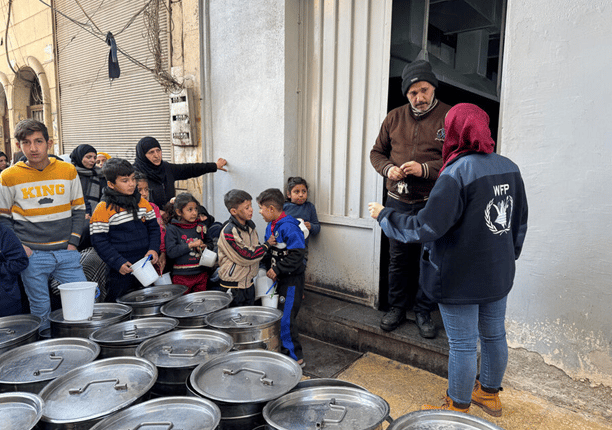Cutting Lifelines
The End of US Aid and the Deepening Food Crisis in Syria
BLOG POSTS
Fayrouz Mahmoud
A food distribution in Aleppo - since the escalation of conflict on 27 November, WFP has distributed 50,000 hot meals. Photo: WFP/Emad Etaki


The recent decision by the Trump administration to halt all emergency food aid through the UN World Food Program (WFP) has been described by humanitarian officials as nothing short of a “death sentence” for millions. The move, which slashes funding to 13 countries, hits conflict-affected areas like Syria with devastating force. The United States had been the WFP’s largest donor, contributing $4.5 billion in the previous year. Its sudden withdrawal is already disrupting food distributions in Yemen, Afghanistan, Lebanon, Jordan, and beyond.
For Syria, battered by 13 years of civil war, economic collapse, and now aid withdrawal, the timing couldn’t be worse. In Syria alone, including a single program worth $111 million that provided basic staples, such as bread, to 1.5 million people.
This comes at a time when over half of Syria’s population is already facing food insecurity, with more than 7 million people still internally displaced and living amid destroyed infrastructure.
Cutting off food assistance in Syria would have devastating consequences for millions already on the brink. As the World Food Programme (WFP) warns, 12.9 million people are food-insecure, 3 million of them severely so, and recent hostilities have displaced hundreds of thousands more. With "the cost of living [having] tripled over the past two years, and the minimum wage [buying] less than a fifth of a family’s food needs, WFP’s aid is a lifeline.
The World Food Program has warned that this move could destabilize entire regions, increase displacement, and trigger more conflict in already fragile areas. “This could amount to a death sentence for millions of people facing extreme hunger and starvation,” the WFP declared on X. But with international lifelines being cut, Syria and other vulnerable nations may be left to face hunger alone.
References
Address
No 10, Block 28023
3rd District, Obour City, Egypt
Contacts
+201100899991
Careers


Copyright © EUMENA 2024
Terms and conditions
Privacy Policy
Commercial Reg.
105282
